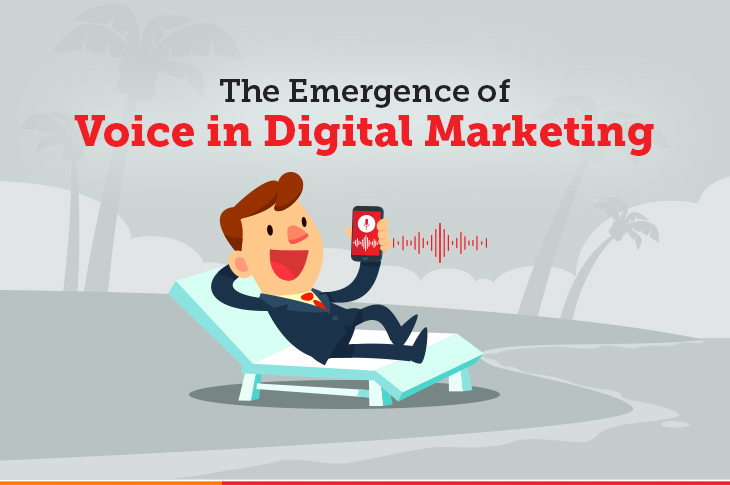The Emergence of Voice Technology in Digital Marketing

Brands all over the world are taking advantage of voice technology or voice search as the new marketing strategy of choice. Voice search has been around for many years, but its usage and importance have been increasing exponentially only in recent times.
Mobile devices equipped with advanced Artificial Intelligence (AI) and speech recognition technology are contributing significantly to this growth. Moreover, voice assistants like Apple’s Siri, Google Assistant, and Amazon’s Alexa are contributing to the popularity of voice search. Whether it’s to order food, keep track of files, or listen to music, more and more people are using these assistants.
This has led to the evolution of the interaction between marketers and consumers. Thanks to the development of voice capabilities, AI-based voice search and voice assistants are fast becoming the new normal. Apart from generating more traffic and enabling customer retention, voice search and voice assistants are also changing the way marketers tell their stories.
Branding is rapidly changing its form and becoming more focused on building a ‘voice experience’ for the consumer. Let’s consider a few examples that illustrate this trend.
Diageo – The Bar
British alcoholic beverage company Diageo tapped into the latest voice technology and helped millions of consumers to become home bartenders. Using Amazon Echo, all they had to say was ‘Alexa, open the bar’, and they could create great cocktails at home. The launch of this feature took place during Christmas 2017.
Flipkart – Hagglebot
This was arguably the world’s first online bargaining experience through a voice assistant. E-commerce giant Flipkart partnered with Google Zoo, an AI-based platform, to build capability and train Google Assistant to haggle with Indian shoppers. It was launched during Flipkart’s Big Billion Days in 2018.
Volkswagen – Road Tales
Volkswagen’s app-based Road Tales was artfully designed to make children look out of the window while traveling by car. This interactive audiobook was a collection of stories that was based on the location of the user. The experience enabled children to live out their fantasy worlds; it fueled their imagination and reduced their on-screen time.
USPS – Voice Stamps
The ‘Smart Blue Box’ from the United States Postal Service was a solar-powered device that could be attached to any street mailbox. By means of voice identification, it allowed people to post and receive mail via the existing postal system. They could do this without the need to affix stamps. Voice recognition combined with AI helped to offer customers a seamless experience.
Swiggy – Voice of Hunger
This fun campaign encouraged users to recreate food shapes and send audio messages in hilarious ways to Swiggy and win food vouchers. It involved multiple challenges – consumers had to recreate the shape of a kebab skewer, nacho, shawarma, etc., by using the voice note feature on Instagram.
The world is fast heading towards an era of hands-free voice search. Business platforms and websites should understand this and improve their marketing capabilities through voice search. It is imperative for every brand to develop digital strategies and capitalize on emerging voice search trends if they are to stay ahead of the game.
